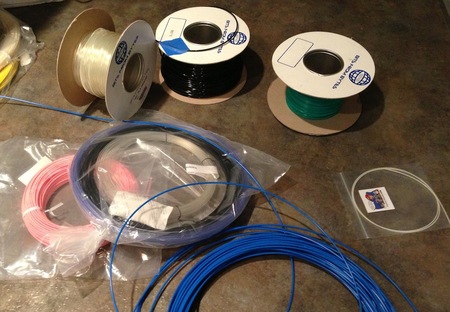This is a question asked by almost all 3D printer owners at one point in their machine ownership: should I print in ABS or PLA plastic?
Of course, the question could be implicitly answered if your machine is not able to print both plastics. Some machines, particularly recently designed units, are PLA-only units. If you have a resin-based 3D printer, the question is meaningless.
The advantages of PLA are several, but what’s wrong with ABS? It’s very commonly available at low cost in numerous colors.
The main problem with ABS is that it warps. It has the unfortunate property of expanding when its heated. Meaning it also shrinks when it cools. Thus, a printed ABS item is “large” when it emerges from the extruder and subsequently cools. This shrinkage not only causes your prints to have dimensions slightly different than your intent, but also could cause the print to fail entirely.
As the upper portion of the print cools and shrinks, it pulls on the lower portion. The ABS that contacts your print bed is also pulled, and if the warping is sufficient, it can actually release the print from the bed causing catastrophic failure.
PLA, meanwhile, offers minimal warping, and then only on larger prints. Today it’s available in many colors (some more interesting) and at a cost similar to ABS. As a bonus, it smells wonderful during printing, unlike ABS’s seemingly-poisonous odor.
There’s a question of mechanical strength, and while it’s true that ABS can take a bit more stress than PLA, more most operations PLA would function adequately.
Our choice? PLA. Especially fluorescent green PLA.



I prefer to use ABS for a couple of reasons.
It's a less rigid material, which makes fitting multiple parts together an easier thing to do in my experience. (For example, try the popular heart gears project in both ABS and PLA.)
It works great with solvents for post-processing. If you need to smooth something or weld parts together, ABS is perfect.
I prefer to use ABS for a couple of reasons.
It's a less rigid material, which makes fitting multiple parts together an easier thing to do in my experience. (For example, try the popular heart gears project in both ABS and PLA.)
It works great with solvents for post-processing. If you need to smooth something or weld parts together, ABS is perfect.